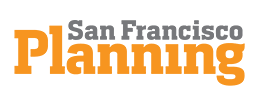Development agreements (“DAs”) are contracts between the City and a developer that lay out development rights and commitments; project rules and regulations; additional public benefits of the project; and implementation. City agencies work closely to ensure that development agreements contain community benefits that address the need for equitable outcomes, including significant affordable housing and local employment components.
Background
What is a Development Agreement?
The purpose of a Development Agreement is to use a contractual approach to garnering community benefits that otherwise couldn’t be achieved through legislated requirements. A DA reduces the risks associated with development, thereby enhancing the City's ability to obtain public benefits beyond those achievable through existing ordinances and regulations.
Some major development projects include the creation of Development Agreements between development sponsors and the City. Common types of projects that feature Development Agreements are those that are larger than individual buildings or discrete developments and which may range from 5 to 200 acres or more, and that entail planning for multiple phases over several years and creation of significant new infrastructure, blocks and streets, parks, and community facilities, and include rezoning. However, there are other smaller-scale projects, including some where no zoning changes are contemplated, where Development Agreements are pursued to achieve benefits that are not possible or practical within the bounds of existing zoning and entitlement processes. Because the negotiation and process for creating and approving DAs is very involved, including not just Planning Commission but Board of Supervisors approval, it is not practical or appropriate for most common types of development to include DAs.
Depending on the circumstances, lead agencies include Office of Economic and Workforce Development (OEWD), Planning Department, and Office of Community Investment and Infrastructure. Other agencies typically involved include Mayor’s Office of Housing and Community Development (MOHCD), San Francisco Municipal Transportation Authority (SFMTA), Public Utilities Commission (SFPUC), Recreation and Parks Department, Public Works, and San Francisco Fire Department.
Development agreements are approved by the Planning Commission and Board of Supervisors; other commissions must review and approve depending on the project scope. California Government Code Section 65864-65869.5 and Chapter 56 of the San Francisco City and County Administrative Code set forth the procedures by which a development agreement is processed and approved.
Why are Development Agreements Important for Community Stabilization?
Development agreements contribute to community stabilization because they provide an opportunity for the City to reach beyond existing zoning regulations to enhance stabilization and prevent displacement by: increasing the amount of affordable housing within developments beyond what is required of development in the city; funding acquisition and preservation of existing buildings and protection of tenants; funding community programs, investments, and objectives; supporting workforce development and community-serving businesses, and protecting arts and cultural resources. There isn’t a limit to what could be determined under a development agreement, if it is feasible, and the parties agree.
Key Trends
The City negotiated or is finalizing 26 development agreements.
Development agreements include a significant number of housing units (both market rate and affordable)
representing a large portion of the city’s housing pipeline.
Many development agreements result in more on-site affordable housing than is called for in the Inclusionary Housing Ordinance.
If existing rent stabilized units are demolished as part of the project,
development agreements (Conservatory of Music, 915 Cayuga, Trinity Plaza, and Parkmerced) provide a contractual means to require developers to not onlyreplace those units and maintain the new units under rent stabilization, but also to require developers to provide interim housing for displaced residents during construction.
Several development agreements (5M and India Basin) include the preservation and acquisition of affordable housing units.
Many development agreements (Visitacion Valley/Schlage Lock) include community-serving retail, such as a grocery store.
Many development agreements (Mission Rock, Potrero HOPE SF, Pier 70, and Candlestick) include community services and facilities onsite,
such and childcare, as well as spaces for future public spaces to meet projected community facility needs.
These large development projects create many short- and long-term jobs.
Many development agreements go beyond the basic economic and workforce development requirements to provide additional funding to OEWD and community organizations and small business and manufacturing support.
Many agreements (5M, Pier 70, and Hunter’s Point among others) include arts and culture protections
by providing a dedicated affordable arts and cultural non-profits commercial space.
What’s Happening Now Related to Development Agreements?
The following is a list of already-approved and in-process Development Agreements:
| Project | Adoption Date |
|---|---|
| KR Flower Mart | In process |
| Potrero Power Station | In process |
| Stonestown | In process |
| 1049 Market Street | In process |
| Laurel Heights/3333 California | In process |
| 915 Cayuga School | In process |
| 749 Toland | In process |
| Tishman Central SoMa | In process |
| Academy of Art University | In process |
| Balboa Reservoir | Adoption expected Spring 2020 |
| United Association of Journeymen and Apprentices of the Plumbing and Pipe Fitting Industry, Local 38 | June 30, 2019 |
| 915 Cayuga Avenue | May 17, 2019 |
| India Basin Mixed-Use Project | December 1, 2018 |
| San Francisco Conservatory of Music | April 3, 2018 |
| Mission Rock | February 2, 2018 |
| Potrero HOPE SF | March 3, 2017 |
| Sunnydale HOPE SF | March 3, 2017 |
| Pier 70 | September 26, 2017 |
| Visitacion Valley/Schlage Lock | May 19, 2015 |
| 5M Project | December 17, 2015 |
| Candlestick/Hunter’s Point | December 1, 2014 |
| 181 Fremont | November 13, 2014 |
| California Pacific Medical Center (CPMC) | October 2, 2013 |
| Park Merced | August 19, 2011 |
| Treasure Island/Yerba Buena Island | June 28, 2011 |
| Trinity Plaza | October 22, 2009 |
The City and developers are increasing community outreach efforts to ensure that residents are connected to housing and employment opportunities created through negotiated development agreements.
Issues with Forming Development Agreements
While many of these large development projects include a high percentage of affordable units, this higher proportion of affordable units is the result of a multitude of factors that make the construction possible. Some of these factors include, but are not limited to, the site being situated on public land, the range of affordable units made available to moderate-income households, the rezoning of the land, and/or substantial amounts of non-residential uses that cross subsidize the affordable units.
Since each development agreement includes various factors such as land ownership and cost, number of housing units, amount of commercial and retail space, and location, among other characteristics, it is difficult to compare them and standardize the process for all agreements.
For Future Consideration
The ideas for future consideration that have the potential to increase community stability in San Francisco are described below. They provide a starting point for agencies, decision-makers, and community members to explore stabilization efforts and identify critical pathways forward. Based on preliminary information, staff is qualifying these ideas according to the type of task, scale of resources and level of complexity to underscore that any of these ideas would require time and additional resources not currently identified. These are not City commitments or recommendations, rather informed ideas that will require careful vetting and analysis as to their reach, resource needs, feasibility, unintended consequences, legal implications, and racial and social equity considerations.
Continue to achieve various community stabilization goals through the Development Agreement process
There is an opportunity to enhance community stabilization policies and programs in the City’s negotiated agreement with a major development project sponsor. In some cases, such as the Conservatory of Music, 915 Cayuga, Trinity Plaza, and Parkmerced development agreements, new units are subject to rent-control and in other agreements buildings have been acquired and protected as permanently affordable housing. To the extent possible, there is an opportunity to dedicate land for community-serving uses such as libraries and parks.
| Type of Response | Early Intervention, Prevention |
|---|---|
| Type of Task | Policy Implementation
|
| Resource | Generally only staff time would be required
|
| Complexity | Medium – generally some legislation and/or some change of and existing program, and two to three agencies involved
|
| Timing | Long Term (more than 5 years)
|
| Geographic Scale | Citywide |
| Partners | Planning, Office of Economic and Workforce Development (OEWD), Mayor's Office of Housing and Community Development (MOHCD), developers, project sponsors |
| Benefit | This could result in land dedication for community-serving uses, the preservation or protection of existing resources, and preservation or production of a higher percentage of affordable housing than otherwise required by inclusionary zoning. |
| Challenge | Not all development agreements result in the same benefits depending on the size and type of project, which can be difficult for community to understand the range of differences. Agreements often require an involved community and lengthy process for negotiation which can also affect project and benefits feasibility. |
Continue to build community and City relationships
There is an opportunity for the City and project sponsors to consider to what extent City staff could be more involved in the community engagement and outreach process of major privately-owned projects. City staff already undertakes extensive engagement to define the major, publicly-owned properties such as the Schalge Loche, Potrero and Sunnyside HOPESF projects.
| Type of Response | Early Intervention, Mitigation |
|---|---|
| Type of Task | Policy Implementation, Service
|
| Resource | Generally only staff time would be required
|
| Complexity | Medium – generally some legislation and/or some change of and existing program, and two to three agencies involved
|
| Timing | Long Term (more than 5 years)
|
| Geographic Scale | Citywide |
| Partners | Planning, Office of Economic and Workforce Development (OEWD), Mayor's Office of Housing and Community Development (MOHCD), developers, project sponsors |
| Benefit | The community, working together with City staff, can better address community need in the development of large projects. |
| Challenge | It would require more resources and support from all parties and agencies involved. |

